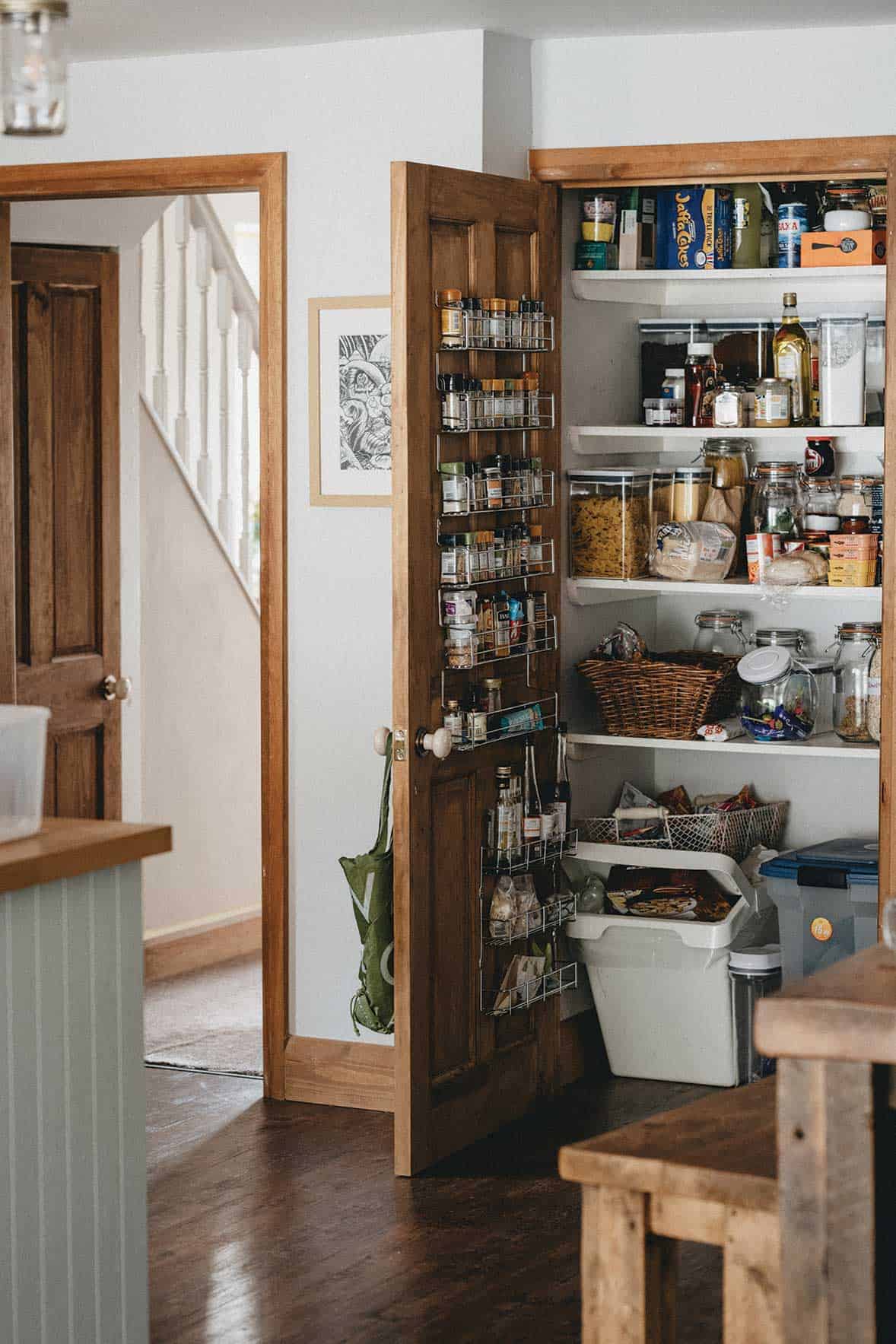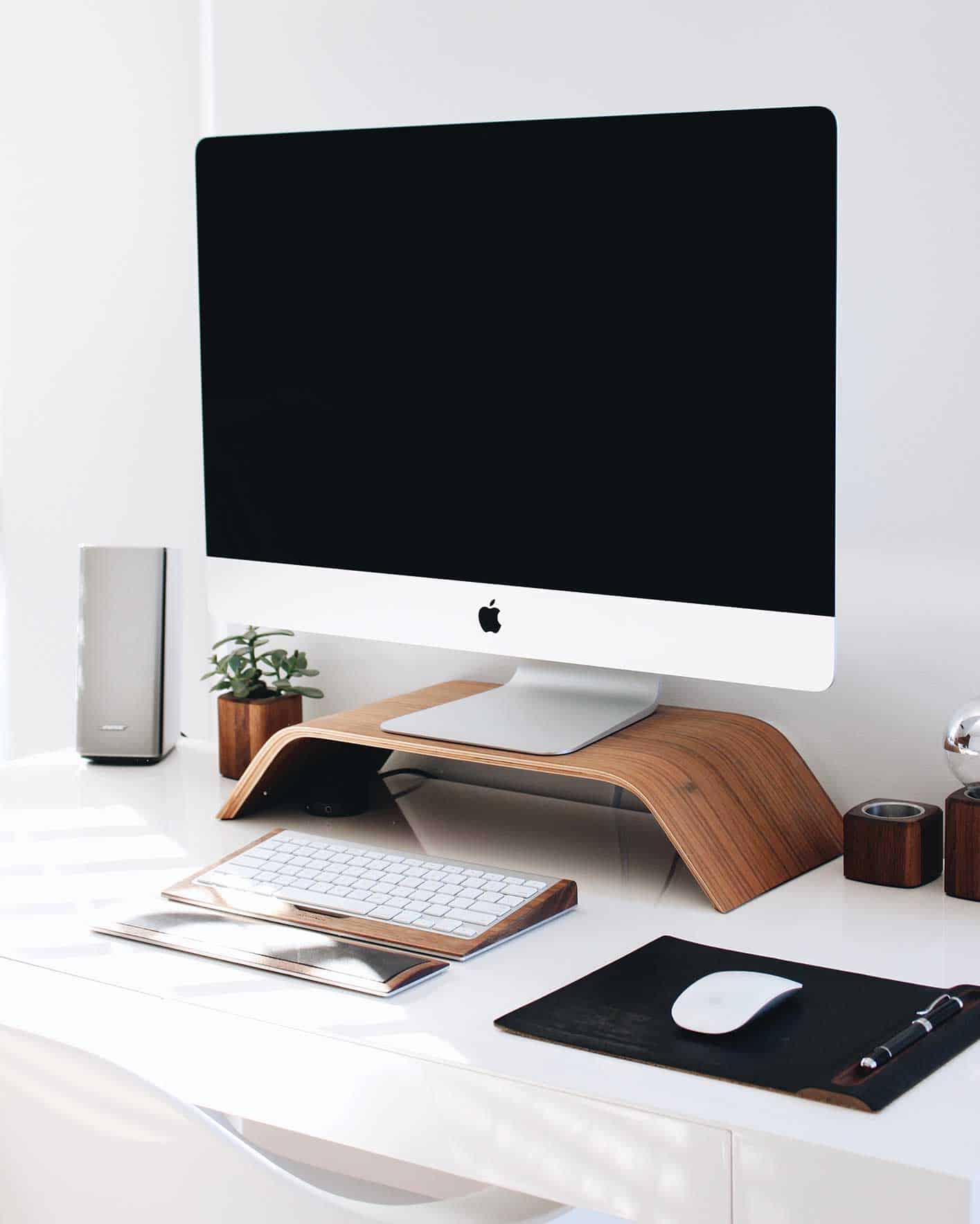5 Professional organizers share simple ways to tidy up your home.
The change of seasons is always a good time to restore a sense of order to your home. Getting organized is a great way to clear your mind, reduce feelings of overwhelm and prepare you for the challenges that lie ahead.
While it can seem like a daunting task to tackle household clutter or purge your overflowing closet, there are certain tricks of the trade that can make the process a little easier. We asked local home organizers to share a few simple tips for creating a streamlined, stress-free living environment.
Remove all non-perishable items, shelf by shelf, and discard anything that is out of date. When putting items back on the shelves, organize products by category, grouping similar items together. Place the most frequently used items towards the middle and heavier items on the bottom. The top shelf is great for items you don’t use as often or things you want to keep out of reach (and sight) of children, like candy and bulky unopened bags of chips. Check expiration dates and place items that need to be used soonest towards the front.
You can save space and your sanity by taking individually wrapped items out of their boxes and placing them into a small bins. This gives your kids easy access to snacks and it allows you to easily see when supplies are running low.
Make sure to use a list when you grocery shop and stick to it, this way you won’t end up with an excess of items that you don’t need.
— Alyssa Colburn


Colburn Solutions
East Bridgewater
781-831-4062
info@colburnsolutions.com
Colburnsolutions.com
Alyssa Colburn discovered her passion for helping people achieve their organizational goals while studying psychology at Bridgewater State University. Her work in the field of psychology has given her a deep understanding of underlying challenges that can accompany clutter and disorganization. The East Bridgewater resident established Colburn Solutions in 2017 and is dedicated to guiding her clients through the transformational process of organizing their home or business so they can enjoy a more organized lifestyle.
Keep bathroom counters free of clutter. Begin by sorting items into categories. This allows you to see what you have and what you need. I prefer clear containers, which allow you to see exactly what is inside and a label can be added, if desired.
Make use of extra storage areas. For example, you can place small containers or baskets in the cabinet under your sink, in drawers or on shelves. You can also add a wheeled cart to your bathroom for extra storage.
If space allows, keep a laundry basket (a cute wicker basket works great) in the bathroom. This will keep clothing and towels from ending up on the floor. If there are towels you want to use again, hang them on hooks, rather than a towel rack. Each member of the family can have their own hook, which saves on space and looks much better.
— Kristen Kindred


Kindred Organizing
617-755-0077
kindredkristen@yahoo.com
Kindredorganizing.com
Quincy resident Kristen Kindred works with clients to make their homes more beautiful, organized, and functional. She will do a full review of every item, clean out the problem areas, organize the clutter and help you set up an organization process that is easy to maintain.
“It’s easy to justify your bursting closet, but a sorted and well-organized wardrobe can reduce stress and frustration and save you time in the morning. There is a special pleasure reserved for those who look in their closet and love everything they see,” says, Gilda Miranda, owner of Styled by Gilda.
Step 1: Purge
Bring everything out of your closet one category at a time and create piles (Yes, No, Sell, Donate) as you sort through each and every piece.
Step 2: Organize
Organize the clothes and accessories you keep, hanging items by category (tops, dresses, skirts, dress pants) on sturdy, slim, non-slip hangers. I recommend keeping all special occasion pieces together, preferably in a space that’s out of the way. This allows you to see how much of one category you already own and what you need more of.
Step 3: Make a Shopping List
It’s time to fill the holes! Keep a list of pieces you’d like to replace, new wardrobe essentials you need, and accessories that need updating. Prioritize and go shopping! The list should help keep you on track as prevent you buying something you already own.
— Gilda Miranda


Styled By Gilda
contact@styledbygilda.com
Styledbygilda.com
Gilda Miranda of STYLED BY GILDA guides men and women through the process of creating a versatile wardrobe. She can help you decide what to keep and what to ditch, and also show you how to wear the clothing items you have in amazing new ways. As a trusted Personal Stylist, she helps her clients develop an “eye” so they can walk away knowing what works best for their individual body shape and lifestyle.
Nearly 40 percent of Americans can’t park their car in their garage because there is so much stuff in it.
To declutter your garage, remove every item and sort it onto tarps on the garage floor or yard. Purge items you haven’t used in the last year. Purged items fall into two categories only: trash and donate. Donated items go to one donation center only. Decide on zones for each type of item. Popular garage zones would be: Lawn & Garden, Automotive, Hardware, Beach, Sports, Recycling, Paper Goods. Give each item you are keeping a visible and accessible home, and make use of inexpensive and easily assembled shelves to hold items.
Basements tend to become a convenient dumping ground for all types of clutter. They also have the added complications of being difficult to access and having excess moisture. Like garages, the same process of sorting, purging, zoning, and re-homing applies.
To avoid mildew and mold, do not store any items in cardboard boxes. Choose plastic containers instead.
Store clothes, books and paper items with a dryer sheet and a silica gel pack to absorb moisture.
Label plastic containers by using a sharpie on the back of an index card and then using clear shipping tape to adhere it to the container.
—Julie Brooks, CPO


Peaceful Place Organizers
892 Plain Street, Suite 1, Marshfield
508-246-7866
julie@peacefulplaceorganizers.com
peacefulplaceorganizers.com
A Certified Professional Organizer®, Julie Brooks believes organization has the power to effect positive personal change in all people living in the house. She approaches organizing your home as a project manager, taking care to put together the right team for each project and making sure you are 100 percent satisfied.
Working from home (and learning from home) can be a challenge if you’re surrounded by clutter and distractions. Having an organized desk will not only look more inviting, it may actually motivate you to be more productive.
Create systems to make sure that only the items you need stay on your desk. One example of a system would be investing in a paper shredder, and utilizing it regularly. Another system would be creating storage so you can easily access your important items.
For a child’s desk, try to keep the learning zone device free. They may be working on a computer, but it’s a good idea to leave the smart phone, television remote and video games in another room. Put hanging file organizers on the wall to store important papers and help keep the desk clutter free.
Strive to begin each day with a clean workspace. Take 10 minutes to clear off your desk space so that when you sit down to work you have a clean slate for the day.
— Victoria McMahon

Indigo Improvements
508-686-7780
organize@indigoimprovements.com
Indigoimprovements.com
Based in Quincy, Victoria McMahon created Indigo Improvements to help people achieve the comfort and serenity found in a decluttered, organized home. She uses design and systems to increase functionality in her clients’ homes.
